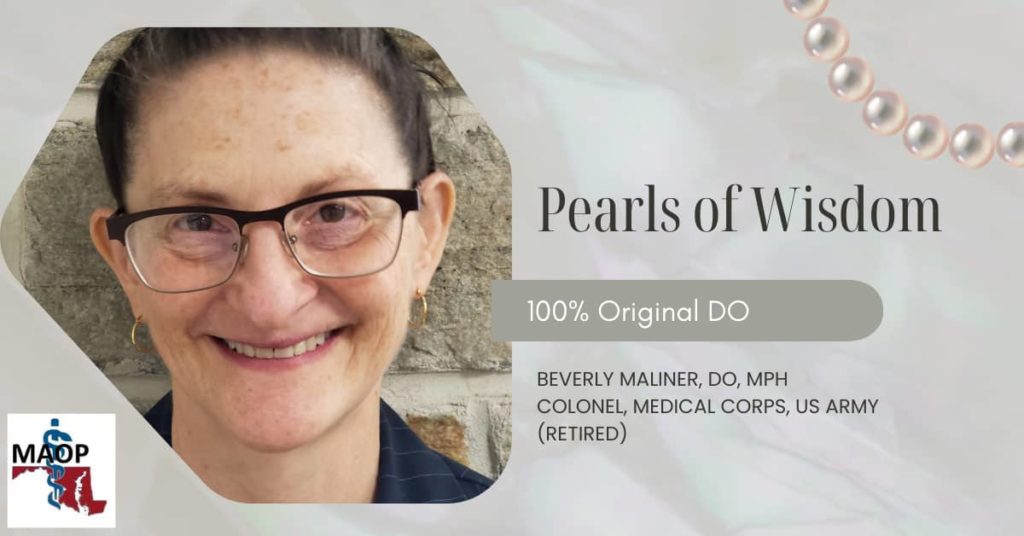BEVERLY MALINER, DO, MPH
COLONEL, MEDICAL CORPS, US ARMY (RETIRED)
To help relax the patient’s torso, place a pillow or bolster under the knees when supine and under the shins when prone.
Credit: Jeff Kucine, DO and every massage therapist I’ve been to.
Heard from an old-timer (name unknown) at a long-ago AAO convocation about positioning a part of the body: “Fiddle and diddle until you get it right.” Works like a charm!
Very occasionally, an area treated with counterstrain will develop a hot spot or a cold spot. In my experience, they have been hot to touch and red and take about 12-24 hours to develop. They feel like places where energy flow is blocked and occur after powerful treatments. Fortunately, they are easily resolved in about 5 minutes by counterstrain of the spot.
Credit: Dr. Ed Stiles
In my experience, and for me, it’s often the small gems that truly stick with me and help me improve. Single lines or statements or brief experiences recalled and maybe buried into the longer presentation or casually thrown out during a conversation.
True trigger points are amazingly powerful. There are many approaches to resolving them. Their physiology and patterns are best described in the publications of Drs. Simons, Travell and Mense. I quote: “At present, the only way to make a definite diagnosis of a trigger point is by physical examination. …The ESSENTIAL first step is to learn how to recognize by palpation the nodule and taut band that are characteristic of a trigger point. …When active trigger points in any muscle fail to respond to treatment, with few exceptions, one or more perpetuating factors need to be identified and resolved.” They often cause radiating pain or paresthesia or cause functional inhibition or restrict normal muscle use. Three case studies:
- A massage therapist with many months of unresolved shoulder and arm pain with “nerviness” into her wrists had trigger points in both deltoids which, when pressed, radiated into her dorsal wrists. I dry-needled both which caused intense regional discomfort which resolved in a few minutes. Her pain was fully gone and both her work and prepping upcoming Thanksgiving meal were vastly more comfortable.
- A fellow presented to a Japanese style acupuncturist friend of mine unable to straighten his knee for 3 years following total knee replacement. Ted found and dry needled trigger points in the ipsilateral hamstrings and the client experienced full extension. (Japanese acupuncture incorporates tactile diagnosis and manual manipulations as well as meridian work.)
- One of my therapists habitually threw her neck and head around in an effort to create sensation after shunt placement for hydrocephalus. As a result, her neck hurt constantly despite her self help efforts and receiving massage. I assessed her seated in her office chair. Her surface posterior neck muscles were atonic (inhibited), a well-described consequence from active trigger points. I used counterstrain working my way deeper into her neck, about C5-6 on her right. Then I found a tiny nodule in a taut band in the intervertebral joint capsule. (Good thing for small diameter fingers!). Counterstrain with neuromuscular release (pressure on the nodule) followed by holding her head and neck in its restricted direction until the tissues let go and moved into full left rotation eliminated the nodule and markedly reduced her discomfort. She followed with deliberate efforts to break her habit and ongoing massage and is doing much better although not 100%.
The thing is, once we therapeutically engage with fascia and resetting reflexes, we have to abandon a lickety-split mentality. In exchange we get vastly more potent and longer-lasting results that more fully respect and leverage a person’s capacity to heal.




